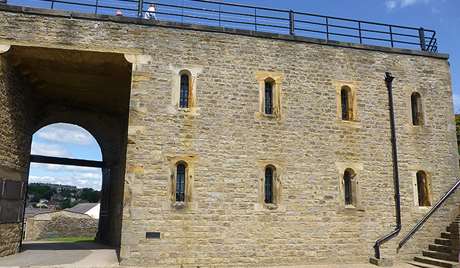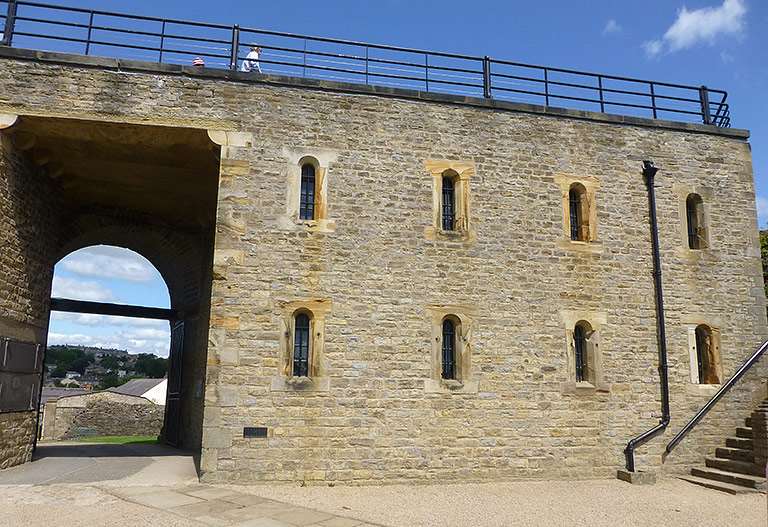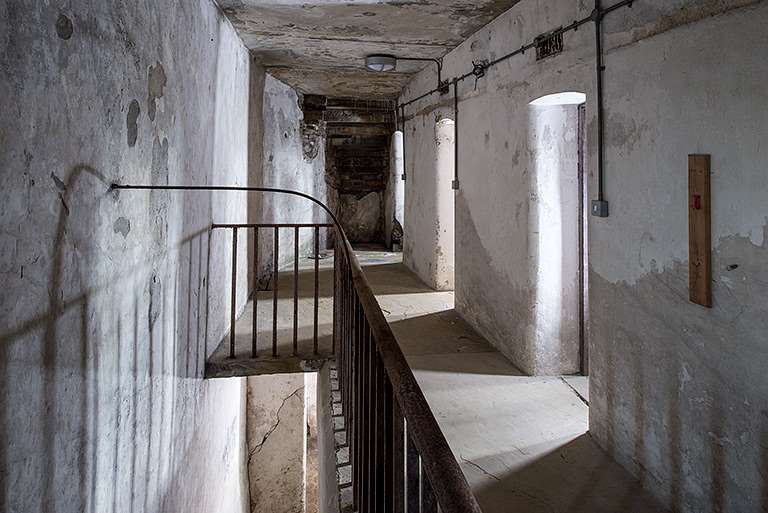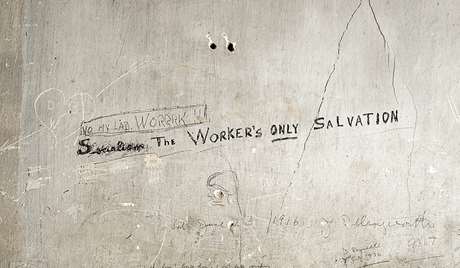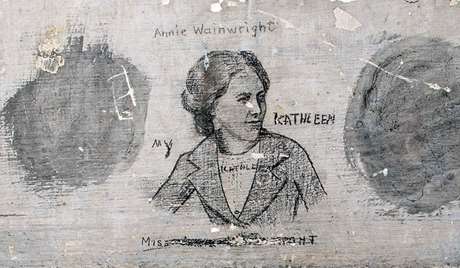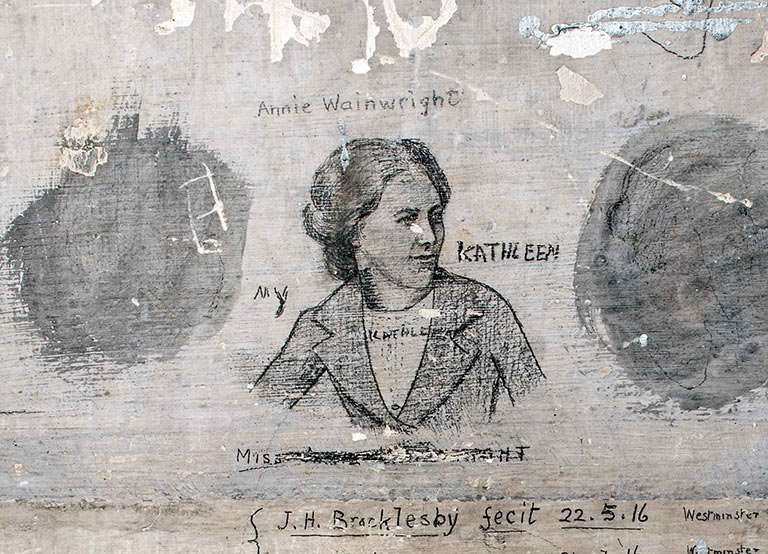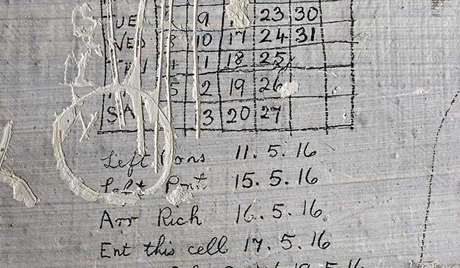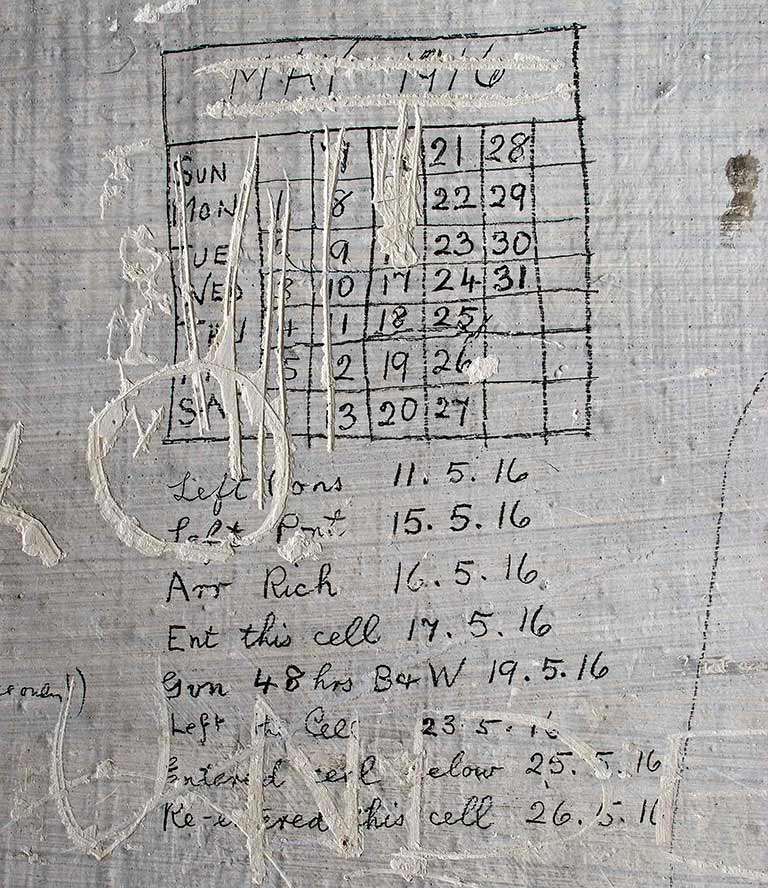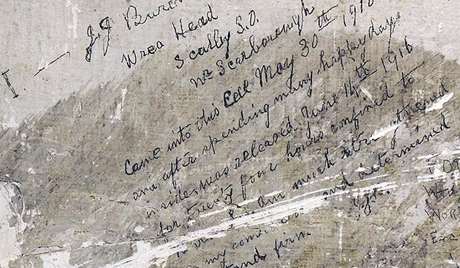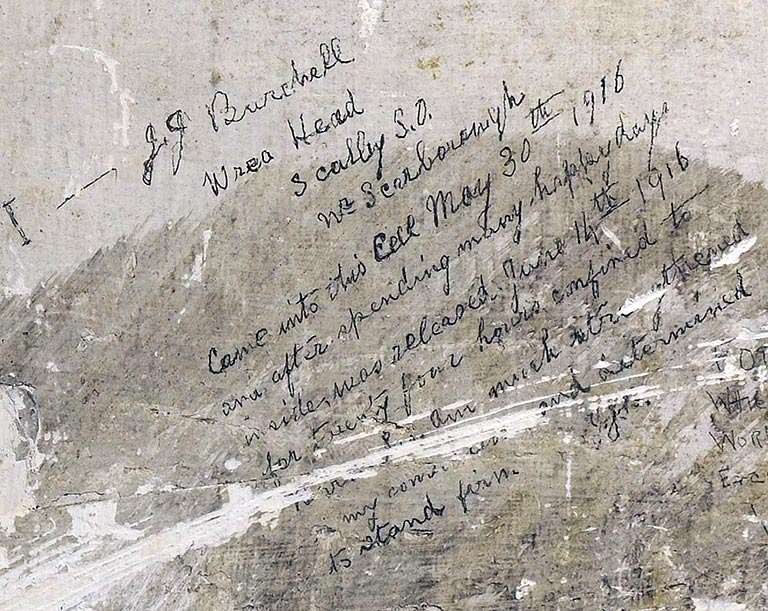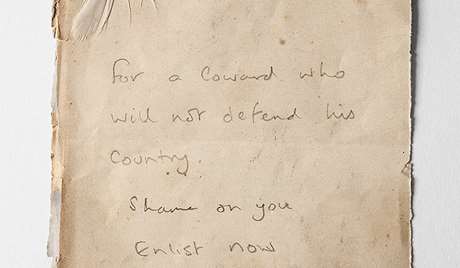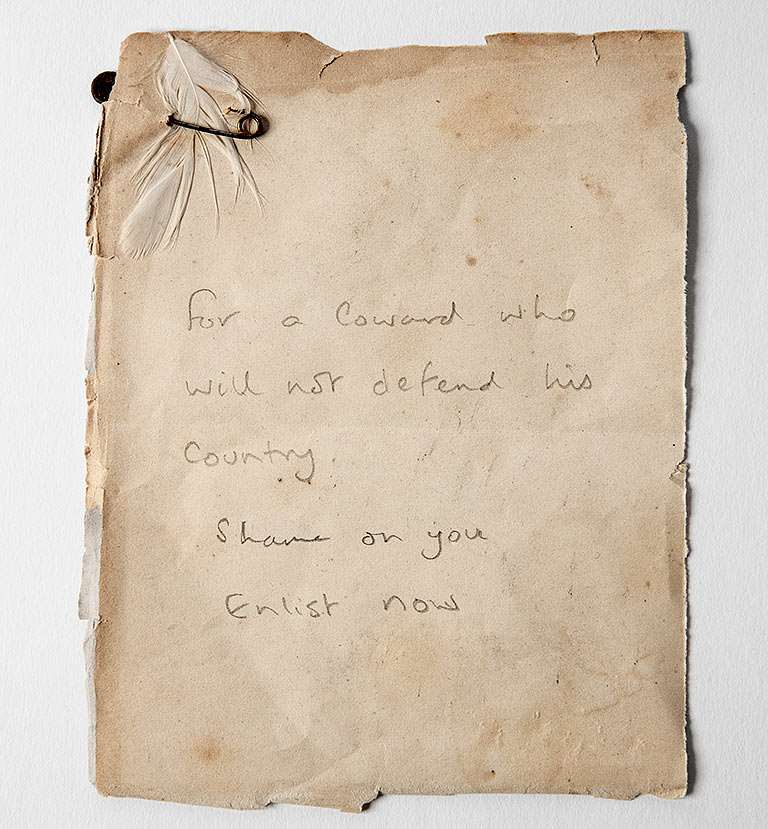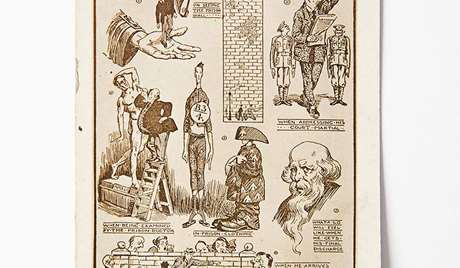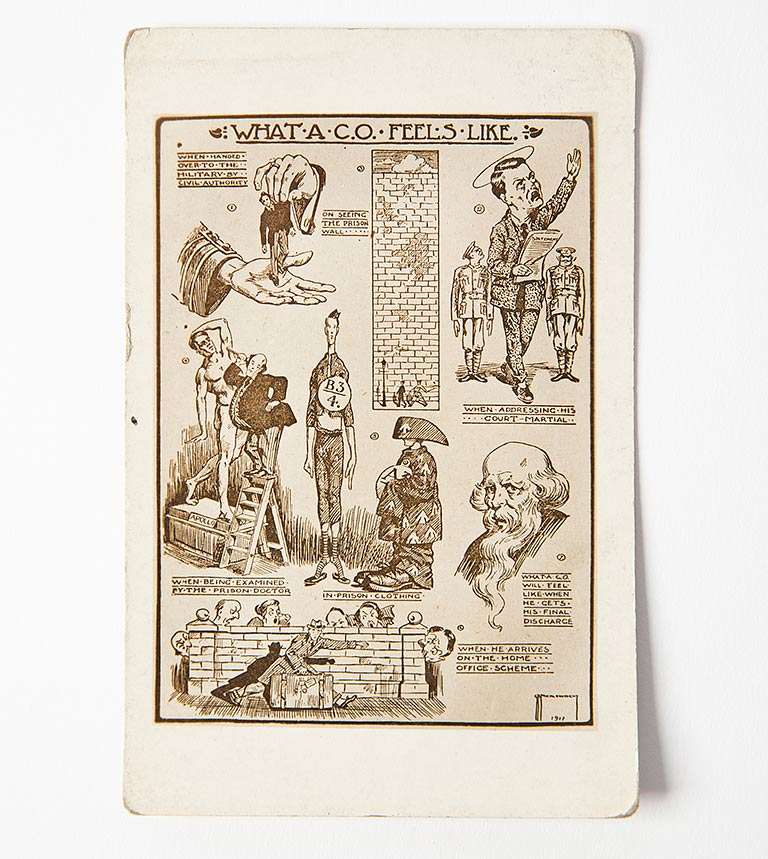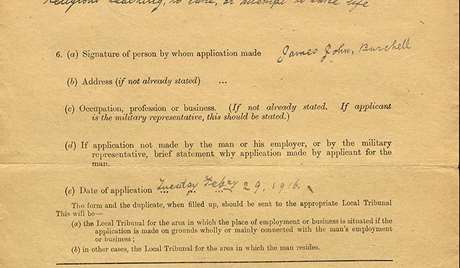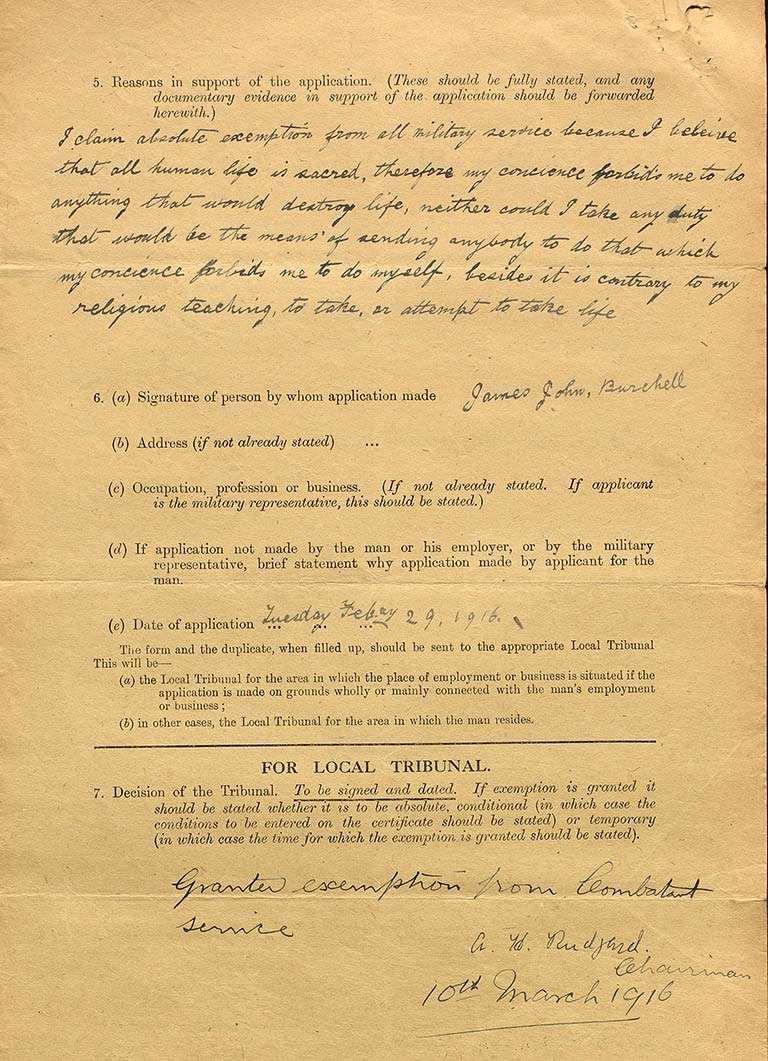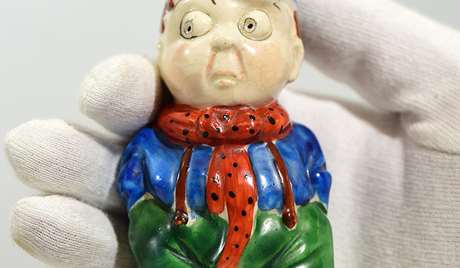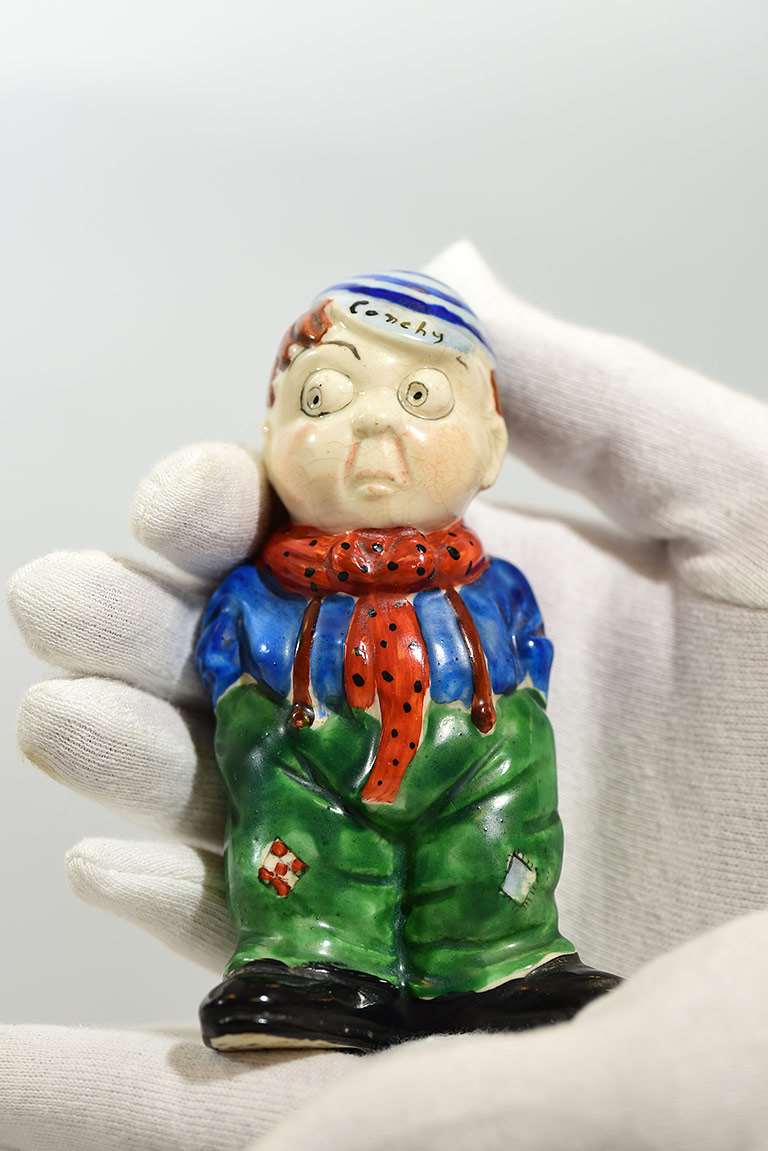Listen
At Richmond Castle, Josie meets historian Megan Leyland and curator Kevin Booth to discover the stories behind the cell block graffiti. Ruth Ecuyer tells Josie about a wedding march written especially for her by John (Bert) Brocklesby, one of the conscientious objectors known as the Richmond Sixteen. And we hear about newly researched letters between conscientious objector James Burchell and his employer, Edith Ellis, from volunteer Carol Chappell and Judith Ellis, Edith’s great-niece.
Listen to this episode below, and subscribe to Speaking with Shadows on your favourite podcast app.
Image gallery
Bonus Episode
In this bonus episode Ruth Ecuyer tells the full story of how John Brocklesby, one of the Richmond Sixteen, came to write a wedding march for her. We also hear extended extracts from the march itself.
The Richmond Sixteen
In May 1916 a group of 16 conscientious objectors – who became known as the Richmond Sixteen – were forcibly transported from Richmond Castle to France. They had been held in the cells at the castle for refusing to take part in any war-related work.
Once they were in France, the men were court martialled for refusing to obey orders, and faced a potential death sentence. Their story demonstrates how far conscientious objectors were prepared to go in order to uphold their beliefs.
Read the full story of the Richmond Sixteen
Gallery of Graffiti
The thousands of drawings and inscriptions on the walls of the Richmond Castle cell block provide an extraordinary and unique record of dissent, rebellion, politics, faith, friendship and pride across the 20th century. Each piece of graffiti represents one voice, one story, one moment.
This gallery highlights some of these graffiti, including inscriptions and drawings created by First World War conscientious objectors such as the Richmond Sixteen.
Explore the Graffiti GalleryFurther reading
- The #White Feather Diaries
- Remembering the Men Who Said No: Conscientious Objection 1916–1919
- Lives of the First World War
- Ellsworth-Jones, W, We Will Not Fight: The Untold Story of World War One’s Conscientious Objectors (London, 2008) [about John (Bert) Brocklesby and his brothers]
- Pearce, C, Comrades in Conscience: The Story of an English Community’s Opposition to the Great War (London, 2014)
- Barrett, C, Subversive Peacemakers: War Resistance 1914–1918: An Anglican Perspective (Cambridge, 2014)
- Perkins, G, Bible Student Conscientious Objectors in World War I – Britain (Charleston, SC, 2016)
Episode credits
Presenter: Josie Long
Producer: Katharine Kerr for Fresh Air
Contributors:
- Megan Leyland, English Heritage historian
- Kevin Booth, English Heritage collections curator
- Ruth Ecuyer, daughter of a conscientious objector
- Judith Ellis, great-niece of Edith Ellis of Wrea Head
- Carol Chappell, English Heritage volunteer on the Richmond Castle Cell Block Project
Explore more
-

Conscientious Objectors’ Stories
Read about the individual experiences of some of the conscientious objectors before, during and after the First World War.
-
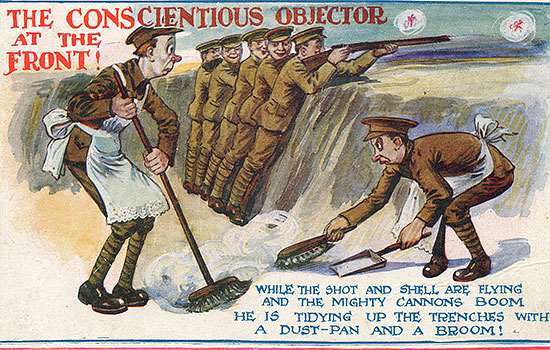
Attitudes to Conscientious Objection
‘Pansies’, ‘cissies’ and ‘conchies’: find out more about how conscientious objectors were treated, and how attitudes have changed since 1916.
-

Conscription and Conscience in the First World War
Find out how conscription came about, and what happened to the men who applied for exemption from military service.
-
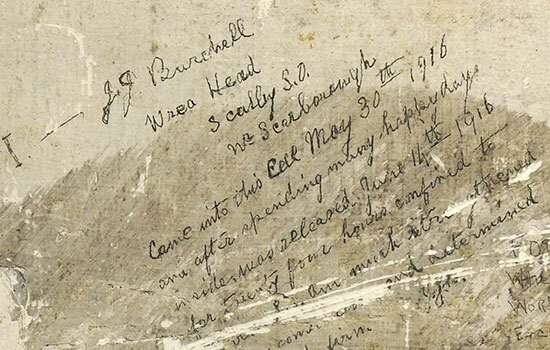
Uncovering hidden messages
Find out more about how research volunteers have been uncovering some of the stories behind the graffiti in the Richmond Castle cell block.
-
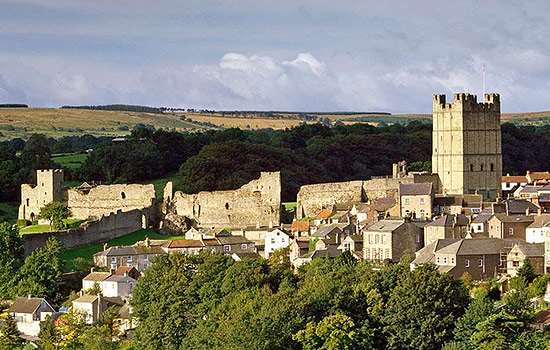
Visit Richmond Castle
A vast castle with well-told tales
-

History of Richmond Castle
Read an in-depth history of the castle, from its Norman origins to its use as a base of the Non-Combatant Corps during the First World War.
-
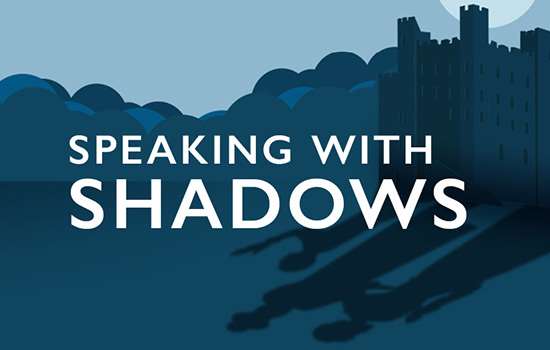
Listen to more Speaking with Shadows
Explore more episodes of Speaking with Shadows, the podcast that listens to the people that history forgot.
-
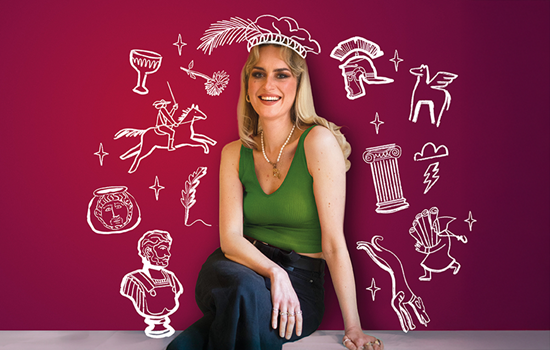
The English Heritage Podcast
Our weekly podcast brings you entertaining tales from unexpected places. We begin with a mystery item and, with the help of experts and special guests, we explore what our past can tell us about our present and perhaps our future.

